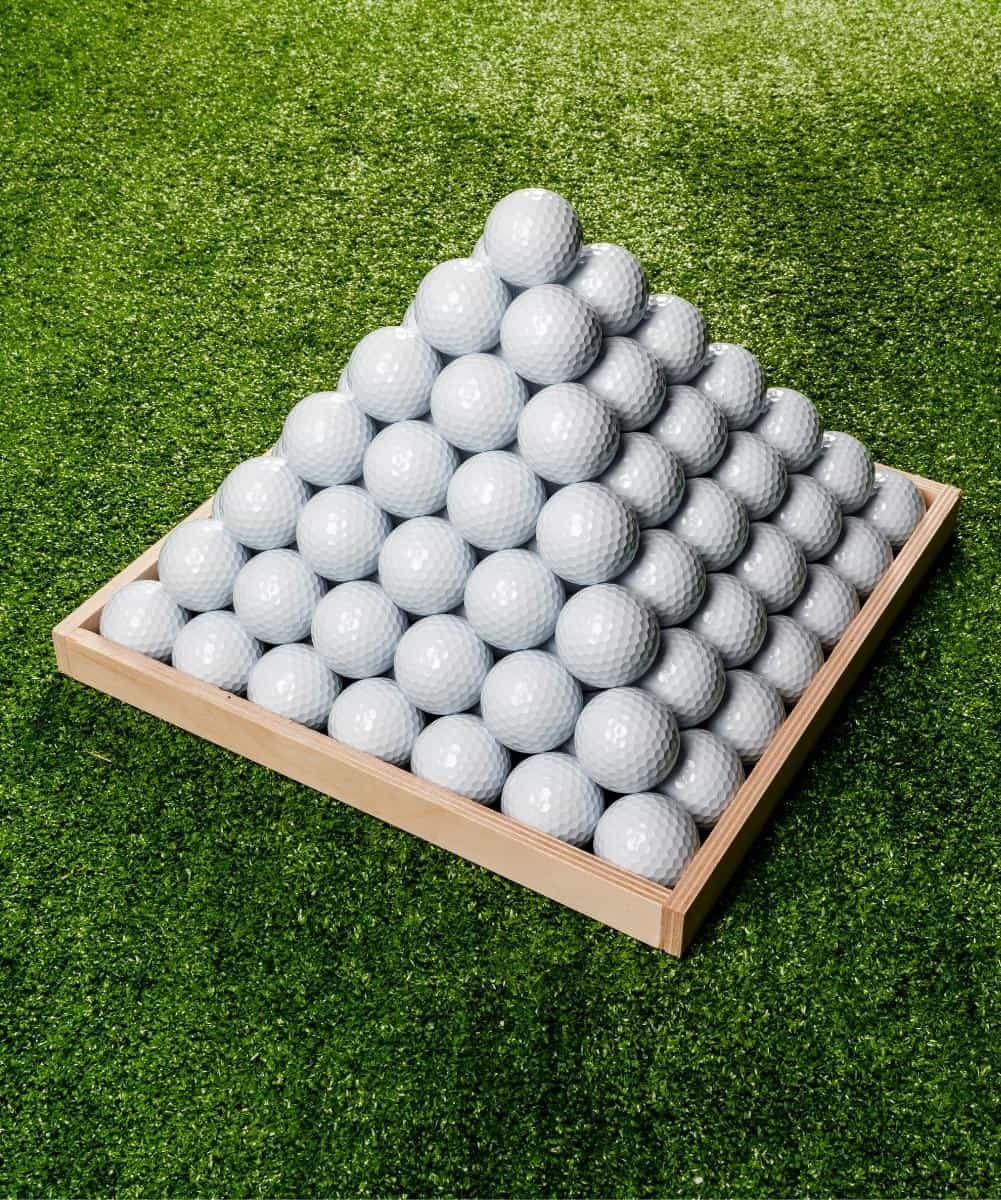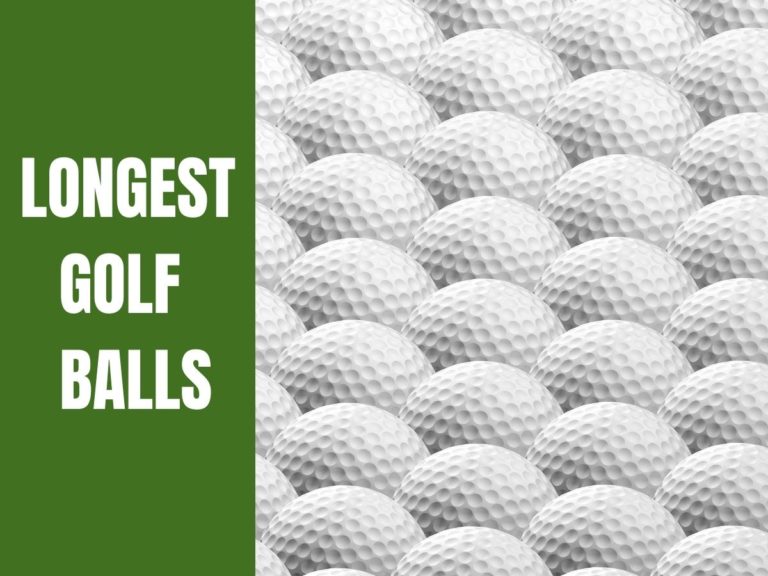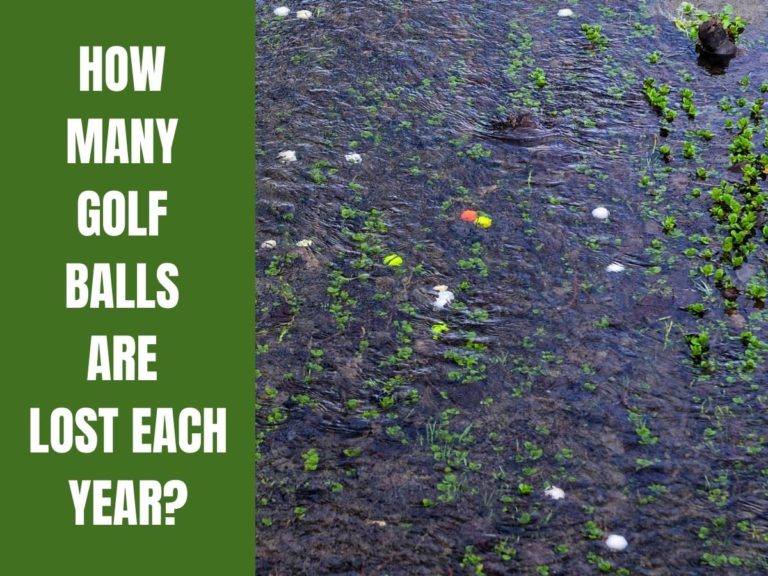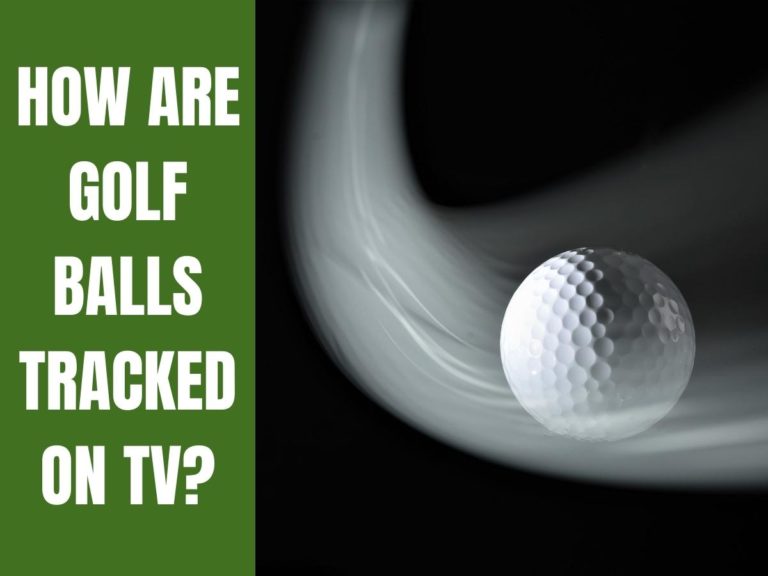Why Do Golf Balls Have Dimples?
Did you ever pick up a golf ball and, while wondering what the number meant or the brand, also pondered why golf balls have dimples, especially as a baseball doesn’t have them and travels pretty far and fast. So, why do golf balls have dimples?
Golf balls have dimples as they create less aerodynamic drag on the ball while flying through the air. A golf ball with no dimples would have double the air drag during a flight than one with dimples, which would affect the game’s fundamental element – getting the ball in the air and getting it far.
So, when did golf balls start having dimples, and who thought of it? How many dimples are there, and is there a limit on the number of dimples a golf ball can legally have? Well, we’re about to find out!

Why Do Golf Balls Have Dimples?
Golf balls have dimples due to aerodynamics, as without the dimples, the golf ball would not perform anywhere close to the distance, direction, and spin that you see every time you hit one, even if you hit it poorly.
What Do The Dimples On A Golf Ball Do?
The dimples on the golf ball are an integral part of the aerodynamic forces that act on the ball as it launches off the clubface. While the clubface impact happens in about 1/2000 of a second, compression on the ball and the acceleration result in lift and drag as the ball cuts through the air.
In the case of the golf ball, the lift acts upwards on the ball, causing it to fly up and into the air, similar to how your arm moves in the air if you have it out the window when driving.
As you rotate your arm in different planes, you can feel the effect of drag and lift by the pressure exerted on your arm.

The Mechanics Of Air Flow Over A Golf Ball
Any object moving through the air has an area of high pressure in front of it. The air will flow smoothly over the front side and eventually separate at the back of the object. As the ball flies through the air, it leaves a turbulent wake of low pressure behind it.
The greater the wake, the more drag affects the ball in motion, and drag will cause the flight efficiency of the ball to decrease, fly lower, have less accuracy, and have shorter distances.
The dimples create this very thin boundary layer of turbulent air on the surface, and this allows the flowing air to follow the surface contours of the ball further to the back of the ball and so reduces the drag.
Dimples effectively reduce the drag on a golf ball by 50% – so the next time you smash one 250 yards down the fairway, 125 yards of that is because of the dimples!
The dimples also do the same with a lift because a spinning golf ball has higher air pressure at the bottom of the ball than at the top. Dimples contribute about 50% of the lift in the golf ball.
Dimples are so important that changing the dimple depth by just 1/1000th of an inch can have a measurably adverse effect on the ball’s performance.
Learn Why Golf Balls Have Dimples In This Video…
The History Of Dimples On A Golf Ball
The first golf balls were made from feathers sewn together and would come apart after repeated impacts. In 1848, Dr. Robert Patterson invented a ball with a solid rubber-like core made from sap called the gutta-percha ball.
Fifty years later, in 1898, the idea for the covered ball evolved from Cleveland’s Coburn Haskell as he wound a thread of rubber into a golf ball and found that it bounced significantly higher than the existing balls.
Golf balls were originally smooth, but golfers found that older balls with nicks, dents, and slices in the cover seemed to fly farther. Therefore old, battered balls became a common issue.
William Taylor, an English engineer, is credited with inventing the dimple in 1908 and patented the design and concept.
Bertram Work, the superintendent at BF Goodrich who was playing golf with Haskell, got the idea of putting a cover on the ball, and by 1930, these had evolved into the balata ball.
Read more: What Are Golf Balls Made Of?
How Many Dimples Does A Golf Ball Have?
In general, most golf balls will have between 300 and 500 dimples, each measuring around 0.010 inches in depth. The lift and drag forces on a golf ball are susceptible to dimple depth: even a 0.001-inch variation in depth can drastically alter the ball’s trajectory and overall distance.
According to the USGA, a ball without dimples would travel half as far as a ball with dimples. However, the number of dimples on the ball does not affect the distance.

How Many Dimples Do The Top Golf Balls Have?
It would seem that the number of dimples that the top balls have is all around the 320 – 350 mark:
- TaylorMade TP5 – 322 dimples.
- Callaway’s Chrome Soft – 332 dimples.
- Titleist Pro V1 – 352 dimples
- Bridgestone Tour B XS – 330 dimples.
What Happens If You Remove The Dimples On A Golf Ball?
I’m glad you asked that as the answer is not only interesting but funny! In 2020, Titleist decided to experiment with four pro golfers who were invited to hit a dimpleless golf ball.
The ball they used was the same core as a Pro V1, but without the dimples, and if you have ever seen those range balls that have been hit to death do weird things in the air, well, they look like new balls when compared to the dimpleless one!
The ball never got into the air from the impact, and the shot tracking radar showed an irregular flight pattern where the ball wobbled through the air rather than the smooth flight shape you usually see.
Not only that but the distances with the driver that the players used only averaged about 125 yards, with the longest being 153 yards – and that’s from a professional player!
You Can Watch What Happened Here…
Let’s Wrap This Up!
When contemplating why golf balls have dimples, it’s truly incredible to think that such a simple feature in the ball and one we as regular players have never really considered with any seriousness, has such a huge impact on the essence of the game!
Next time you tee it up and watch it (hopefully) sail into the blue yonder, whisper a small prayer of thanks to William Taylor, without whom the game as we know it would be vastly different and a lot more frustrating!
Related Posts You May Like:






